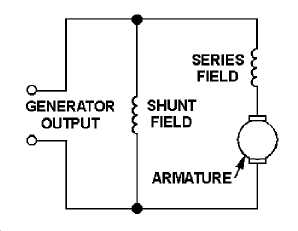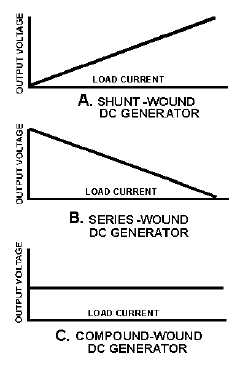1-18
Figure 1-17.—Compound-wound generator.
In the compound-wound generator when load current increases, the armature voltage decreases just
as in the shunt-wound generator. This causes the voltage applied to the shunt-field winding to decrease,
which results in a decrease in the magnetic field. This same increase in load current, since it flows
through the series winding, causes an increase in the magnetic field produced by that winding.
By proportioning the two fields so that the decrease in the shunt field is just compensated by the
increase in the series field, the output voltage remains constant. This is shown in figure 1-18, which
shows the voltage characteristics of the series-, shunt-, and compound-wound generators. As you can see,
by proportioning the effects of the two fields (series and shunt), a compound-wound generator provides a
constant output voltage under varying load conditions. Actual curves are seldom, if ever, as perfect as
shown.
Figure 1-18.—Voltage output characteristics of the series-, shunt-, and compound-wound dc generators.





